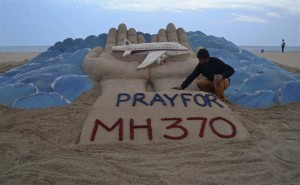How Technology Aided Crews To Find Missing Malaysia Airlines Flight MH370
It was ominous from the beginning. On March 8, 2014, Malaysia Airlines flight mh370, on route from Kuala Lumpur to Beijing, China, simply vanished. There was no signal, no debris, no trace of a passenger and crew list numbering 239. Yet, this is the twenty-first century, the modern technological age. How could a plane with all those instruments on board and all those people simply disappear?
Day after day, the mystery deepened. Finally, into the third week, debris was spotted that was presumed large enough to come from mh370. The search was on to end the mystery. The wait has seemed endless for relatives of those aboard flight mh370 and for the rest of the world. If the debris turns out to be from the missing plane, what took so long to find it? For one thing, the area is what may be termed endless ocean, some 1,500 miles southwest of Perth, Australia. It makes the needle in the haystack mystery seem easy, and it is unlikely that the search for mh370 would have come this far without the aid of modern technology.
How has technology aided the search for mh370?
* Sub-hunting planes. The P-3 Orion and P-8 Poseidon are equipped with sensors that include radar and are designed to search below the surface of the ocean. The flight crews have high-resolution cameras and a radar system plus their own eyes in the search.
* Satellite images. The WorldView-2 satellite from Digital Globe, some 478 miles above the earth, first captured the image of debris.
* Australian military tracking buoys, which try to find objects in the sea by tracking currents, also spotted the debris.
* Transponders. These devices in the cockpit send out flight signals such as heading or speed in an emergency. The transponder in mh370 stopped sending signals at 1:20 a.m. into the flight.

These technological devices are being used to cover an area of more than two million square miles, about the size of the United States. Along with hundreds of pairs of human eyes, they keep up the search for mh370 to answer the question: What happened?
The Price of the MinuteHound Time Clock
Time Clock Calculator
See For Yourself Why MinuteHound Is Top Dog. Compare Our System Vs Others

MinuteHound MH370.
We are confident in our business. Be just as confident in yours.
Call (800) 351-7237 MinuteHound today!
TimeClock@MinuteHound.com
